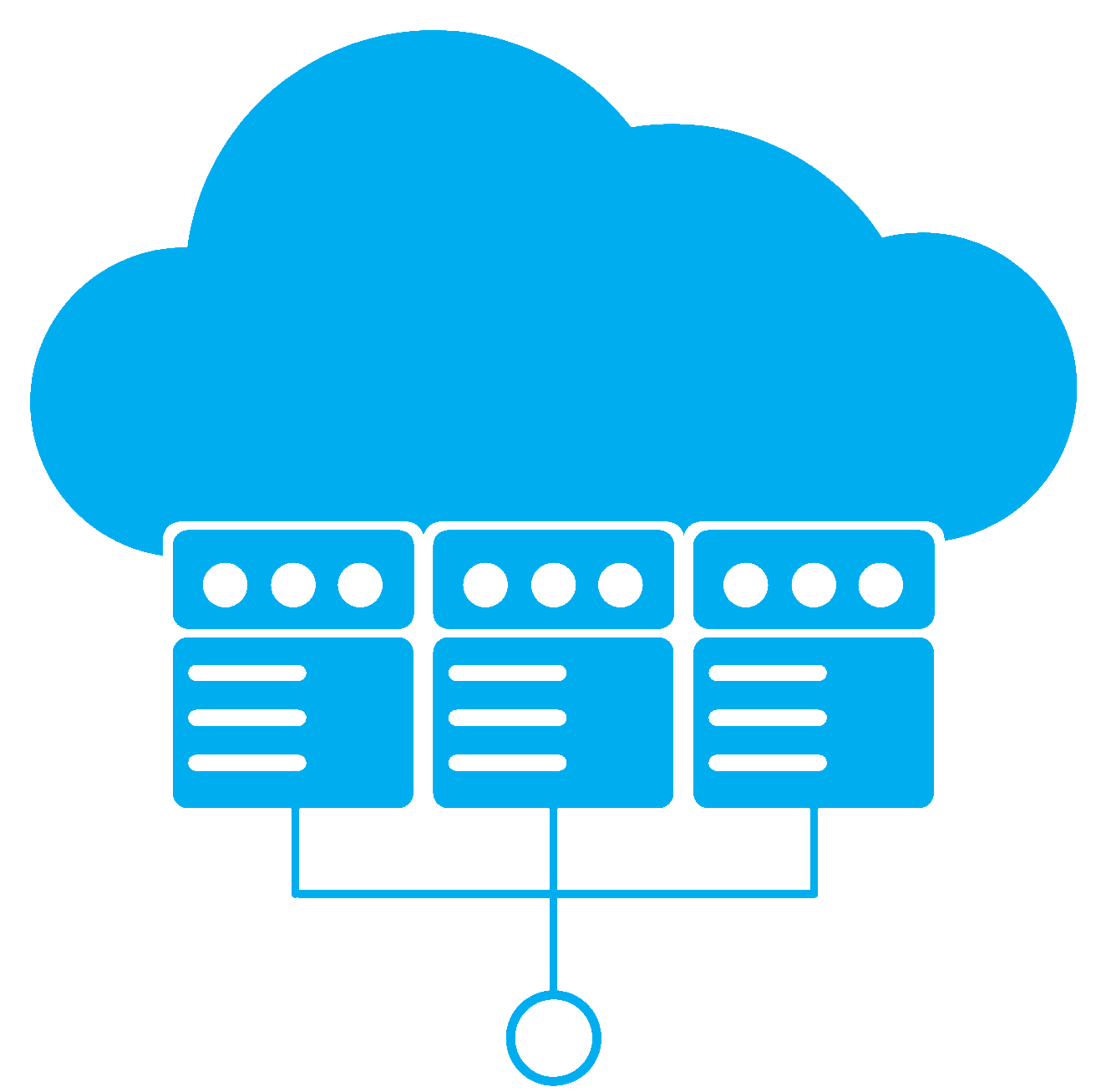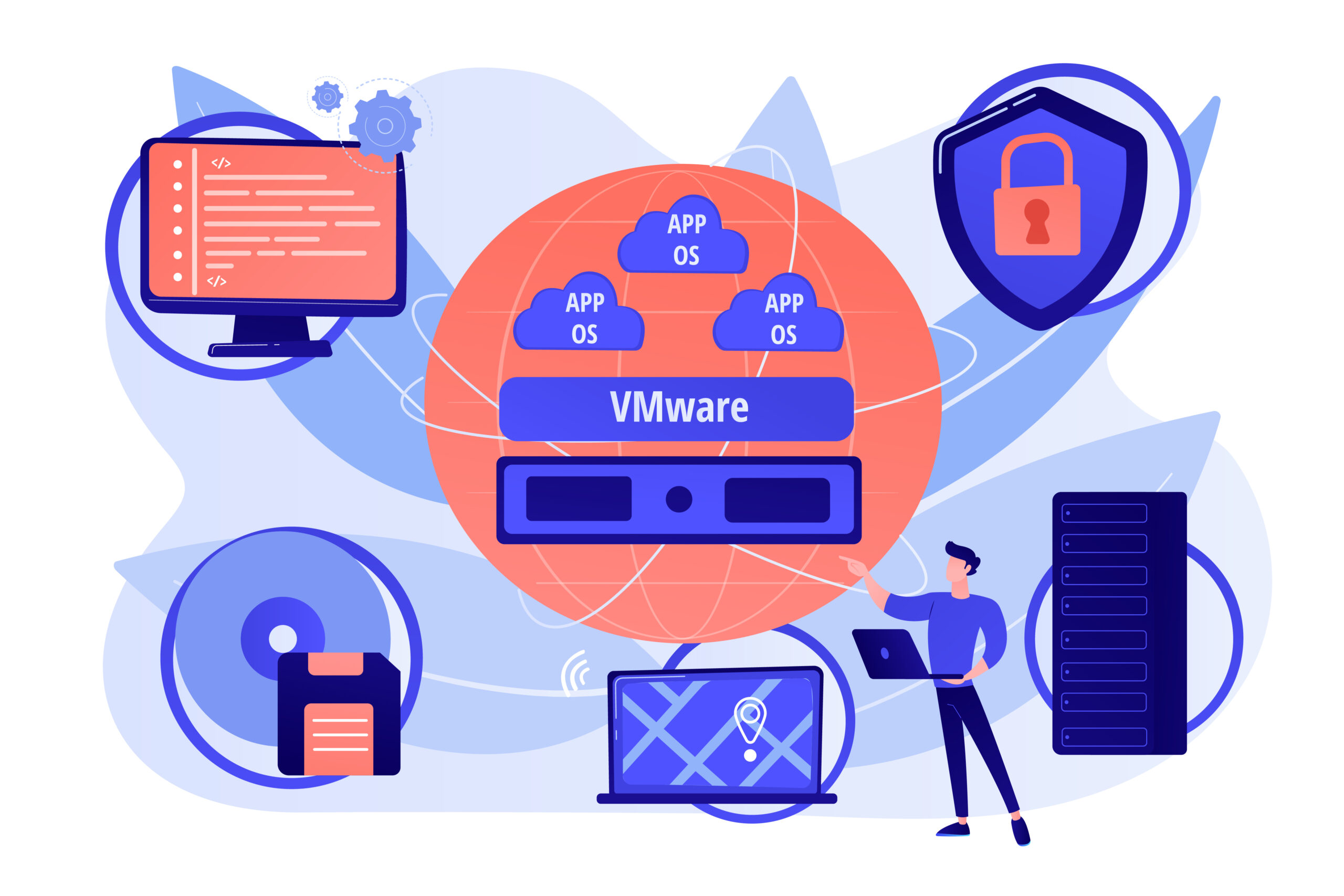Virtualisation
Optimize processing, streamline actions, and automation of tasks
Virtualisation Services
In the last decade, the advancement in technology has led to the increasing use of technological devices by businesses in optimizing processing, streamlining actions, and automating tasks. Today, IT managers are also searching for solutions that help them increase efficiency and reach greater heights while reducing costs. This is precisely what Virtualisation does. It offers so many benefits to businesses interested in adopting its use of a virtual system. Read on to find out all you need to know about Virtualisation.

What is Virtualisation?
Virtualisation is the act of using a virtual machine (VM) rather than physical computer resources. It is a technology that allows users to create multiple simulated environments from a single physical system.This implies that a single physical system can deliver multiple workloads simultaneously, with each workload having access to its allocated resources.
Virtualisation is cost–saving; all you need is just a single physical machine that is made to act multiple, thereby saving you costs of having more network systems, workstations, servers, multiple operating systems and so on.The proliferation of systems offered by Virtualisation has made it possible to be used in a wide range of business applications today.
How Does Virtualisation Work?

What are the types of Virtualisation?
Network Virtualisation
Network virtualisation involves splitting available bandwidths into separate channels. Here, the true complexity of the network is masked, while the network is broken into manageable parts that allow for quick changes to be made at any time.
Desktop Virtualisation
Desktop virtualisation allows users to access a virtual desktop infrastructure and operating systems remotely using a thin client. A thin client is a low–budget endpoint computing system that makes use of a network connection from a central server. With desktop virtualisation, access to virtual desktops and servers becomes easy and better secure eliminating the need of physical computers.
Application Virtualisation
Application virtualisation allows applications to run in a virtual form with no access to the operating system. With app virtualization, a Windows application can efficiently run on a Linux system.
Storage Virtualisation
Storage virtualization helps companies to cut down costs and effectively utilize virtual their storage devices and systems.
Data Virtualisation
Data virtualisation involves the manipulation and retrieval of data without access to the physical location of the data storage. It delivers access to unified business data in real–time and allows for fast decision–making.
Server Virtualisation
What are the benefits of Virtualisation

Cost-saving
One of the primary benefits of Virtualisation to small and large–scale businesses is the potential for cost savings through the use of a virtual machine. There may be a high cost of investment associated with buying and setting up new computing resources including hardware or software. However, Virtualisation is cheaper than traditional computing in the long run. Virtualisation gives room for reduced maintenance costs.
Improved Productivity
Virtualisation also leads to improved productivity. Projects capable of taking longer times in a physical environment can now be completed in minutes with Virtual machines.
Resource efficiency and minimal downtime
With server virtualisation, it is possible to efficiently run different applications on a single physical computer with minimal or no downtime.
Fast backup and disaster recovery
With Virtualisation, data can be automatically backed up on virtual machines. This makes disaster recovery easier.
Cloud migration is easier
Virtualisation also makes cloud migration easier. Virtual machines can be deployed from a data center to a cloud–based infrastructure in real–time with no interruption.
Faster Deployment
There are so many virtual tools available at the moment, which makes the process of deployment shorter and simple so you can see the returns much quicker than expected.
What are the Differences between Virtualisation and Cloud Computing?
In the first instance, Virtualisation and cloud computing may seem similar. However, they differ in so many ways. While Virtualisation replaces a typical component such as a server, network, or data with a virtual one, cloud infrastructure involves the use of multiple computers to send out data through a wireless connection network.
Both Virtualisation and cloud resources work hand in hand to help businesses increase agility, scalability, efficiency and focus on improving productivity. In addition, Virtualisation plays an all–important role in cloud computing. This is because resources that have been virtualised can be transitioned to the cloud quickly.

Why Choose our Virtualisation Services?
If you are interested in leveraging all the benefits that Virtualisation offers, then you should opt for our virtualisation services. At DC Encompass, We are made up of a team of virtualisation experts available 24/7 to ensure your business needs are met.
We offer customized end–to–end virtualisation services that highly scalable, reliable, flexible, and secure to meet your business needs. Some of our virtualisation services include Desktop Virtualisation, Server Virtualisation, Application Virtualisation, Network Virtualisation, Data Virtualisation and Storage Virtualisation.
We also have powerful virtualisation infrastructures suitable for your operating environment. In creating a virtualisation strategy that works for your business, our team of virtualisation experts starts by assessing your business need, and designing a unique and tailored made strategy. They take time to deploy these solutions and provide additional support when necessary to improve efficiency. Choose our virtualisation services today and enjoy improved productivity, and resource optimisation.
Why choose DC Encompass?
Apart from the increased scalability, agility and reduced operating costs, one of the biggest benefits of Virtualisation is its ability to place a business on the path to rapid transformation through the use of virtual environments. With traditional hardware, businesses are limited in all–round. However, by adopting Virtualisation through DC Encompass, companies can instigate cultural change and move towards a cloud environment just in real time using a virtual machine.
For more information on our Virtualisation services, please call our professional team in Sydney